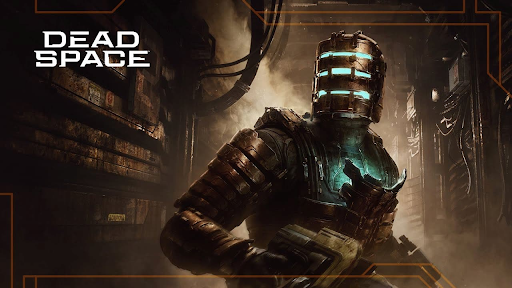Dead Space: Game Review

The era of the 2000s was one of the most exciting times in the game development sector as companies got innovative in the hopes of finding the next big gaming franchise. One such seemingly big endeavour came from Glen Schofield and EA Redwood Shores, the release of Dead Space. This horrific, panic-inducing, limb-shredding action-horror title went on to inspire six games, plus the current remake.
Dead Space (2023) is most definitely a better-looking version of Dead Space (2008). Debuting on next-generation consoles and PC, it’s that kind of game where everything glistens on the surface, yet there is something sinister lurking through the trenches. Motive has polished the foundations of Dead Space with changes drawn from its 2011 sequel as well as some simple yet effective new ideas.
The Narrative
You play Isaac Clarke, an engineer on the spacecraft USG Ishimura. You are the last line of defence between the remaining living crew and the deadly reanimated corpses. The undead has become Necromorphs; horrific zombie-alien hybrids that won’t succumb to traditional means. Fortunately, your offence is equally unique, as the high-powered mining tools at your disposal provide the means to fight against the threat.
This introduction to the game’s world gets players into the action almost immediately, right after they are first introduced to Isaac Clarke. Isaac and the crew of the USG Kellion head for an emergency maintenance mission on the Ishimura. This large “planet cracker” is a mining tool meant to draw in large asteroids before melting them into resources that can be used by the United Spacefaring Guild across its settlements.
After a strange interference, your ship crashes into the docking bay of the Ishimura, with most of your crew exiting the ship without injury. Isaac and the team immediately notice this large ship is dormant, with no signs of life anywhere as you venture into the security area. But within minutes, you and your team are introduced to the Necromorphs that have taken over the ship.
Visual and Sound
Dead Space has updated voice acting, visuals, and sound design. This greatly benefits the remake and makes it an immersive experience. Often, players have to watch the story flow helplessly as something happens that they can’t prevent. The game invites players to explore, with most areas open to them before they ever need to go that way.
While there aren’t many NPCs on the ship that are friendly, coming across an audio, video, or text log works as great environmental storytelling, usually providing context to the scene around it.
One cool example is a security mail terminal you’ll come across while searching a bathroom, where you’ll hear two other workers reacting to a man trying to pull his teeth out with pliers. While looking around the bathroom, you can find those pliers in a sink, alongside a bloodstain where the man hit his head, died, and presumably began to turn into a Necromorph.
The game’s environment is beautifully crafted, giving extra attention to tonnes of details on different levels, something that may not have been possible a decade and a half ago, when the first title came out.
The details are so well laid out that you can properly witness the functioning spaceship, which has signs of previous life nearly everywhere you look, which contrasts with the fungus and monsters. Unlike the original, it’s easy to see how this ship was once used for something other than harbouring the Necromorphs.
The sound design in Dead Space deserves its own recognition. The atmospheric sounds feed and fold into the uncertainty of the game seamlessly. You can never be sure whether that voice you heard was there or if you were imagining it. Hearing screams occasionally ring out across the ship also lends a terrifying feeling as you move through the Ishimura.
The Spooky Nature
Dead Space adds a lot of spookiness to the game, whether it’s the mortuary door slowly opening or a banging on the wall you can’t quite pinpoint. Evidently, the monsters are only a small part of this, with the environment and different surprises you randomly encounter being enough to put the average player on edge.
The most notable part is that the spookiness actually works, because another horror game that was recently released by the same creative mind, The Callisto Protocol, does not manage this. Where Dead Space uses the environment to keep players from getting used to its different monsters, The Callisto Protocol would throw enemies at you consistently, weakening their effect.
Even halfway through Dead Space, the game finds plenty of ways to creep up on you. To be fair, there usually is, which makes you check every corridor and behind you even more than you did before. It’s better to clear an entire room before you get impaled for looking at the store too soon.
Gameplay
Dead Space has turned telekinesis into a full-fledged secondary combat option, it lets you freeze an enemy with stasis, chop its arm off with a plasma cutter, and pin it to a wall with its own severed limb. The game is so intuitive that the original title feels incomplete without it. The same notion goes for other features, such as free-floating zero-gravity sections. You can now travel through space without hopping between walls using magnetic boots.
The core gameplay remains the same. Isaac makes his way through The Sprawl, utilising his handy plasma cutter and several new weapons to slice off hordes of Necromorphs. Visceral has made weapons more effective, dealing extra damage, and having more customization options. There are also a few new items, like a long-range rifle and a mine launcher. These new weapons may not be as effective as the plasma cutter, but they do the job of quick crowd clearance.
The Necromorphs are unlike any enemies you’ve seen before. Headshots do about as much damage to them as flicking rubber bands. To survive, you’ll need to dismember their insect-like limbs, one at a time.
Whatever you do, don’t drop your guard, as everything takes place in real-time. That means any action you take, whether it be reloading or digging through your inventory, gives the Necromorphs a perfect opportunity to attack.
Accessibility
Dead Space greets you with a now-standard menu asking what accessibility settings you’d like to turn on. It’s immediately apparent how far this title is gone to try and make the game available to all audiences, regardless of disabilities or game preferences. This is refreshing in the gaming industry.
Dead Space has all of the standard accessibility options, like getting rid of rapid-press quick-time events and options for aim assist. What’s more, there are a variety of difficulty settings, allowing players to approach the game in whatever way they see fit. Players start on “Medium” as the suggested difficulty, but they can lower it to “Story” to eliminate much of the challenge.
This option doesn’t dampen the horror of the game, instead making the scarier parts more accessible for those who are having trouble getting through it. Players can change the difficulty at any time, allowing them to get through a tough part before changing it back if they wish. This option by itself will make the game much more accessible to a wide range of audiences.
Verdict
Dead Space is an intense, graphically gorgeous, and thoroughly atmospheric game that ramps up the absurdity to new levels. It’s cheesy to say that “if you liked the first game, you’ll love the sequel,” but in this case, that’s an adequate and fair assessment. Dead Space (2023) is Dead Space with the tuning at its finest and the scares at their most delicious.

